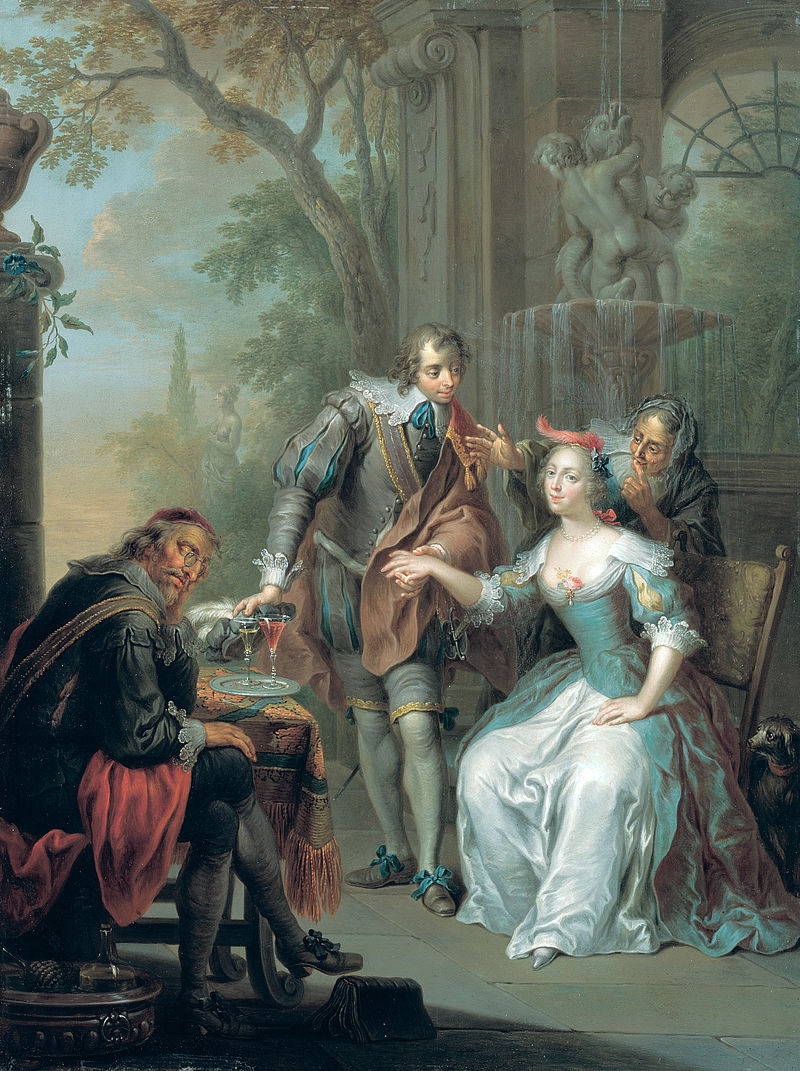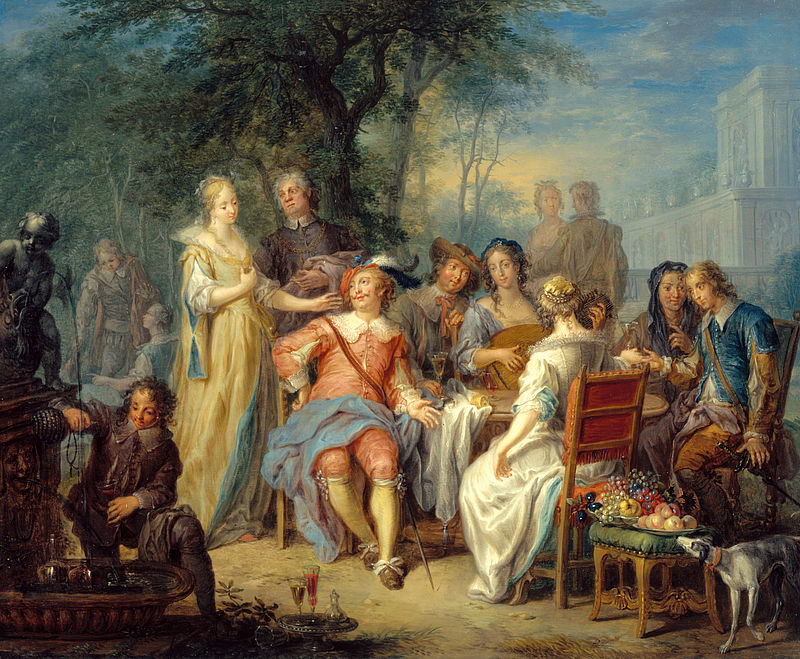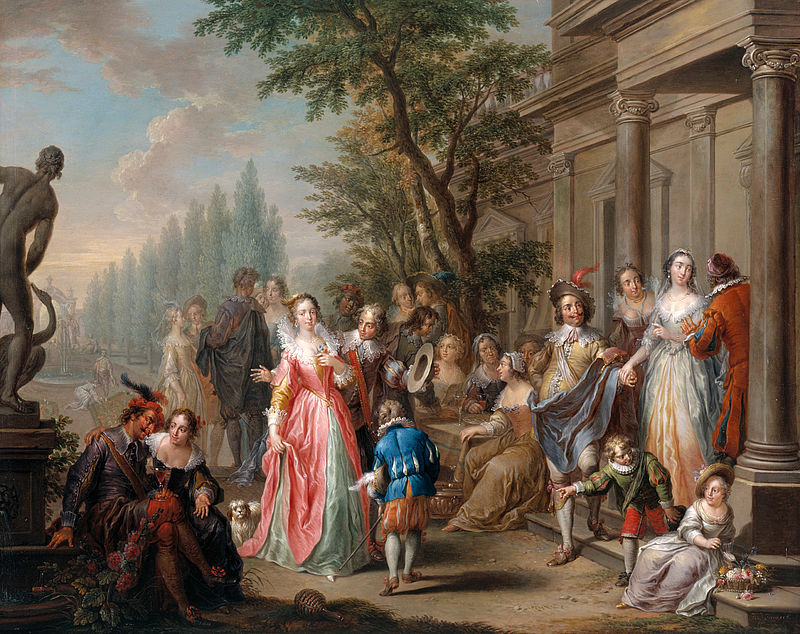Gallant Scene
Franz Christoph Janneck (1703 - 1761)
Framesize 63.00 x 51.00 x 6.00 cm
Janneck and Platzer were bound by friendship and their predilection for small-scale cabinet pictures. Both painted genre scenes and religious subjects. Around 1730, his contact with Orient, a pupil of Anton Faistenberger (1663–1708), prompted Janneck to paint ideal landscapes; he also added human and animal staffage to Orient’s landscapes.
Here, among architectural elements, a young gallant pays court to a lovely girl, against the background of a garden landscape. Her eyes – following the blandishments of the matchmaker behind her – are on the old man who, having indulged in the wine on the table and in the wine-cooler on the ground, has fallen asleep. Even the book – symbol of scholarship – has slipped out of his hands. The girl’s attitude and the dog peering out from behind her chair can mean only one thing: cautioned by the matchmaker, the young couple are about to escape the sleeping chaperone. The significance of the dolphin changes with time. Janneck renders the toothed whale as a baroque fountain sculpture, with a wide mouth, large head and scales, held by two amoretti. In the background is a statue of Venus, the dolphin being one of her attributes; combined with the goddess of love, it epitomises the erotic, seductive atmosphere of the couple
scenes so popular at the time.
Similarly to the "Gallant Scene", the sculpture of Leda and the swan symbolises the electric atmosphere of "Entertainment in a Palace Garden" (Residenzgalerie Salzburg, Inv.-no. 605).. For both paintings, Janneck used copper, his favourite picture support, to lend brilliance to the colours.
DUCKE Astrid: Janneck Franz Christoph, Gallant Scene, in: DUCKE Astrid, HABERSATTER Thomas, OEHRING Erika: Masterworks. Residenzgalerie Salzburg. Salzburg 2015, p. 98





